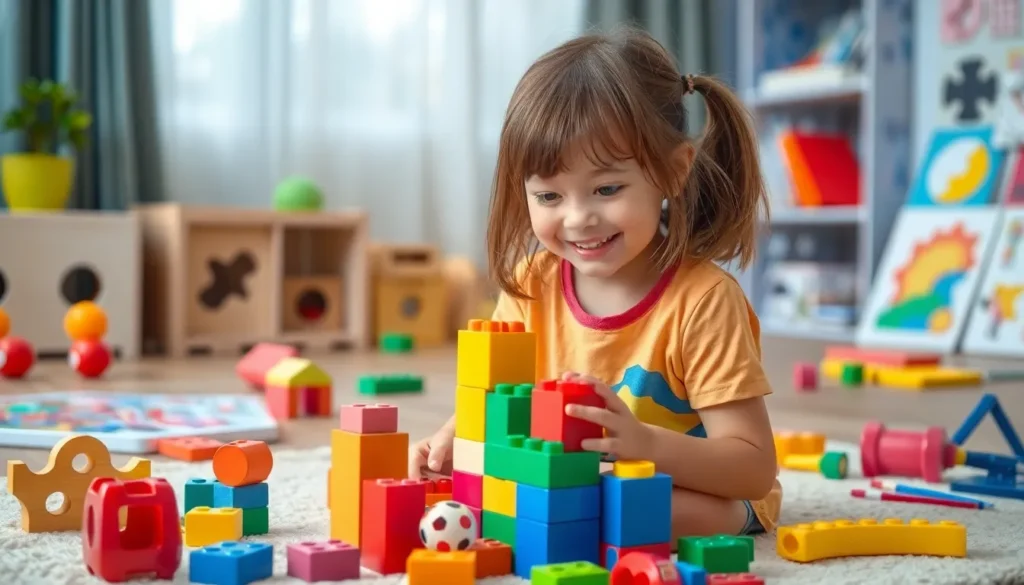Co-parenting from a distance can feel like trying to juggle flaming swords while riding a unicycle—challenging and slightly ridiculous. Yet, for many parents, this is the reality they face. Whether due to job relocations or life changes, long-distance co-parenting is becoming more common. It’s not just about surviving the distance; it’s about thriving and ensuring kids feel loved and supported no matter where their parents are.
Table of Contents
ToggleUnderstanding Long Distance Co-Parenting
Long distance co-parenting involves managing parenting responsibilities across significant geographical distances. This arrangement can arise from various life changes, demanding effective communication and planning.
Definition and Importance
Long distance co-parenting refers to situations where parents live far apart but share custody and parenting duties. Establishing a clear definition is crucial since it shapes how parents collaborate and interact through digital means. Importance stems from the need to ensure children’s emotional and developmental well-being despite physical separation. Prioritizing consistency in communication connects parents and children, fostering stability. Flexible arrangements can adapt to changing circumstances, reinforcing the parental bond.
Common Challenges
Managing logistics becomes a significant challenge in long distance co-parenting. Coordinating schedules for visitations often leads to complications. Communication barriers also arise, making it difficult for parents to stay aligned on decisions. Parenting styles might clash, causing disagreements about discipline or education. Emotional strain affects both parents and children, as longing for closeness can lead to feelings of isolation. Navigating these challenges requires patience and a commitment to open dialogue, ensuring the best outcomes for children.
Effective Communication Strategies

Fostering effective communication in long-distance co-parenting requires intention. Parents can utilize various tools and methods to enhance their interactions.
Utilizing Technology
Technology plays a vital role in long-distance co-parenting. Video calls allow parents to connect with their children visually, ensuring emotional bonds remain strong. Text messaging facilitates quick updates regarding daily activities or scheduling changes. Shared calendars help coordinate important events like school functions or doctor appointments. Parents should explore co-parenting apps that enable shared information, such as expenses and parenting plans. These tools encourage collaboration and reduce misunderstandings.
Setting Clear Expectations
Clear expectations help establish boundaries in co-parenting. Parents must define roles related to responsibilities, including finances, visitation schedules, and communication frequency. Regular discussions about child’s needs create a mutual understanding of parenting goals. Writing everything down in a parenting plan supports accountability and aids in conflict resolution. Setting guidelines regarding discipline and education ensures both parents remain on the same page. Addressing changes proactively prevents potential misunderstandings and strengthens the co-parenting relationship.
Creating a Co-Parenting Plan
A co-parenting plan lays the groundwork for successful long-distance parenting. Parents must collaboratively establish clear guidelines to support their child’s needs.
Establishing Visitation Schedules
Creating visitation schedules involves considering travel time and availability. Parents must prioritize their child’s school schedule, activities, and emotional well-being when planning visits. Flexibility proves essential, allowing families to adapt to unforeseen changes. Discussions regarding holiday breaks and summer vacations should occur early. Setting boundaries helps minimize misunderstandings about who is responsible for travel arrangements. Clear communication aids in confirming visit dates and times to ensure everyone is on the same page.
Defining Responsibilities
Defining responsibilities clarifies each parent’s roles in daily life. Assigning responsibilities for education, healthcare, and extracurricular activities strengthens collaboration. Weekly check-ins can help monitor the child’s well-being and adjust plans as necessary. Parents should document expectations in a shared parenting plan to maintain mutual accountability. Identifying communication preferences fosters understanding and supports emotional connections. Consistency in discipline styles and routines ensures the child experiences stability, essential for development.
Supporting Your Child Emotionally
Supporting a child’s emotional well-being during long-distance co-parenting requires intentional strategies. Parents must prioritize their child’s feelings and experiences to foster security.
Encouraging Open Dialogue
Fostering open dialogue is essential. Each parent should create a safe environment for children to express their thoughts and feelings. Encouragement to share emotions helps identify any challenges they face. Listening actively promotes trust between parents and children. Scheduling regular video calls enables deeper conversations and connection. Engaging discussions about daily experiences can strengthen bonds. Consistent check-ins help parents remain aware of their child’s emotional state.
Maintaining Consistency
Maintaining consistency across both households is crucial. Both parents should collaborate on discipline, routines, and educational expectations. Establishing clear rules that apply in both homes minimizes confusion for children. Regular meetings between parents can ensure alignment on parenting approaches. Communicating changes or updates promptly helps create a cohesive parenting strategy. Each parent’s involvement in major decisions reinforces a united front. Scheduling consistent visitation patterns provides children with stability, fostering a sense of security in their lives.
Best Practices for Success
Flexibility and adaptability play crucial roles in long-distance co-parenting. Each parent must be willing to adjust schedules and expectations based on the child’s changing needs. Open communication enables quick adjustments to visitation arrangements and shared responsibilities. Circumstances often shift, necessitating a willingness to reassess plans. Prioritizing the child’s emotional and physical well-being helps maintain harmony across both households. Embracing change fosters a supportive environment essential for a child’s development.
Building a support network strengthens long-distance co-parenting dynamics. Friends, family, and professional resources offer invaluable assistance. Engaging relatives in the child’s life provides emotional support and stability. Co-parenting groups or forums can share strategies and experiences, easing feelings of isolation. He or she can also tap into local community services for childcare or activities. Collaborating with other parents facing similar challenges fosters connection and shared solutions. Cultivating this network enhances resilience and adaptability in navigating co-parenting challenges.
Long-distance co-parenting presents unique challenges that require dedication and effective strategies. By prioritizing open communication and establishing a solid co-parenting plan, parents can create a nurturing environment for their children despite the physical distance. Flexibility and adaptability are essential as circumstances evolve, ensuring that the child’s needs remain at the forefront.
Building a support network can further enhance the co-parenting experience, providing additional resources and emotional backing. Ultimately, the commitment to fostering a loving and stable environment will help children thrive, allowing them to feel secure and supported by both parents, no matter the miles that separate them.









